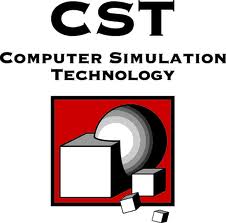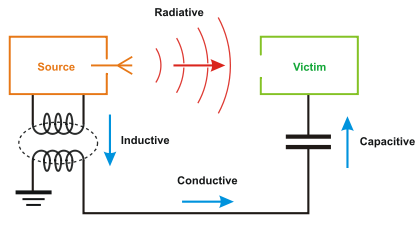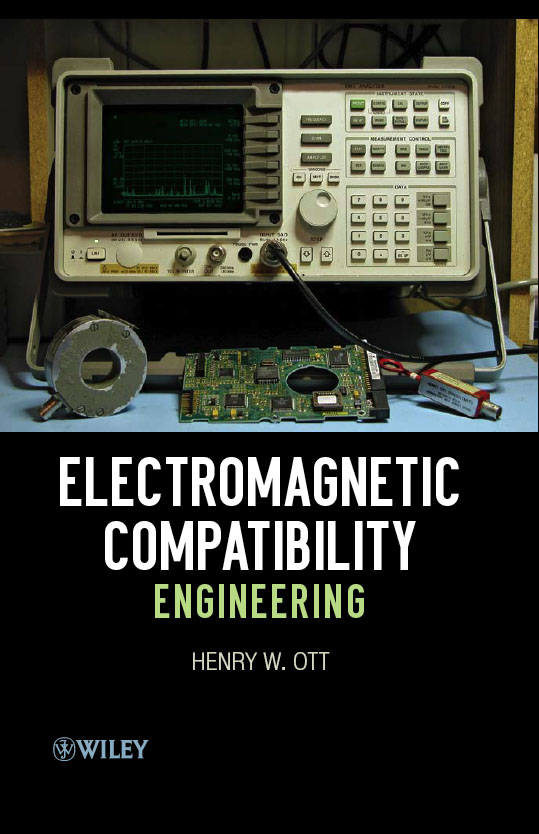EECE 585
Electromagnetic Compatibility
|
Welcome to EECE 585! Spring 2012 - Section 201
1. Course
Synopsis
|
|||||||||||||||||||||||||||||||||||||||||||||||||||||||||||||||||||||||||||||||||||||||||||||||||||||||||||||||||||||||||||||||||||||||||||||||||||||||||||||
|
Upon completion of EECE 585 -
Electromagnetic Compatibility, students
will be able to:
|
|
Students
should consider taking EECE 585 if, at
some point in their career, they
anticipate:
|
|
Electromagnetic
Compatibility and the Professional
Engineer
- Where public safety or legal liability are issues, it is generally necessary to have a Professional Engineer assume responsibility for the correctness of a design or results by signing or sealing a design document or test report. - For example, professional engineers are often required to seal the results of tests and measurements conducted to verify compliance of devices and systems with Electromagnetic Compatibility standards and regulations, especially where deficiencies in such systems could affect public safety. - Industry Canada, Transport Canada and other certification organizations generally require that Professional Engineers sign or seal documents associated with compliance with EMC regulations . - Many clients now require that their consultants carry errors and omissions insurance. This is very difficult to obtain if one isn't registered as a Professional Engineer. - RFP's (Requests for Proposal) and RFQ's (Requests for Quotations) for consulting services often stipulate that bidders be registered as Professional Engineers to be eligible for consideration. This is especially common for work done on behalf of a provincial government or another consulting firm. - Because the Professional Engineer designation is awarded to those with documented experience in designing engineering solutions based upon established and accepted principles, many consultants feel that it gives them instant credibility with prospective clients. - If you aren't certain whether you need to register, your manager or director will not hesitate to advise you! - For more information, please contact the Association of Professional Engineers and Geoscientists of BC |
 |
2. MATLAB
Tutorials
|
Video Tutorial
Getting
Started with MATLAB05:10 How to get started with MATLAB and where to go next for more information Working in the Development Environment 04:03 How to work in the MATLAB desktop development environment Writing a MATLAB Program 05:42 How to write a MATLAB program, including creating a script and a function |
Video
Tutorial
Analyzing
Data04:44 This video demonstrates the different types of data analysis available in MATLAB Visualizing Data 04:07 This video demonstrates the different types of data visualization available in MATLAB Working with Arrays 07:52 How to create and manipulate MATLAB arrays, including accessing elements using indexing |
|
Web-based
Tutorial
MATLAB
Basics
TutorialA short web-based tutorial from Carnegie-Mellon University and the University of Michigan |
Practice
Problems
MATLAB
ExercisesA set of web-based exercises from Bucknell University. Answers included. |
|
Web-based
Tutorial
MATLAB
Getting Started An in-depth set of web-based tutorials from the MathWorks |
Supplementary Material
A tutorial by
Jeffrey Donnell, The Woodruff School of
Mechanical Engineering, Georgia Tech.
|
3. External Resources
IEEE
 |
 |
4. Course Schedule
| Week |
Mon |
Tue |
Wed |
Thu |
Fri |
| 1 |
2 Jan University Closed |
3 |
4 First Day of Classes Term 1 |
5 |
6 |
| 2 |
9 Course Introduction |
10 |
11
|
12 |
13
|
| 3 |
16 Introduction to EMC Chapter 1 |
17
|
18
|
19 |
20 |
| 4 |
23
Lab Readiness Review (One hour) |
24
Lab 1 Probing Techniques |
5 |
26 |
27 Lab
Experience Review (Special Session) |
| 5 |
30
Precompliance EMC Measurements Chapter 18 |
31
Lab 2 Digital Pulse Spectra and Rise Time Measurement |
1 Feb |
2 |
3 |
| 6 |
6 Cabing and Grounding Chapters 2 and 3 |
7 Lab 3 Controlling Crosstalk – Frequency Domain |
8 |
9 IEEE EMC
Seminar MCLD 418 09:00 - 16:00 |
10 |
| 7 |
13 Balancing,
Filtering and Passive Components Chapters 4 and 5 |
14
Lab 4 Controlling Crosstalk – Time Domain |
15
|
16 |
17 Project Proposals Due |
| 8 |
20 | 21
|
22 Spring
Break
|
23 |
24 |
| 9 |
27
Shielding Chapter 6 Project Review |
28
Lab 5 Controlling Common Impedance Coupling |
29 |
1 |
2 |
| 10 |
5 Conducted Emissions Chapter 13 |
6 Lab 6 Controlling Radiated Emission fm Cable & PCB |
7 |
8 |
9 UBC
Comm. Workshop KAIS 2020/2030 09:00 - 16:00 |
| 11 |
12
RF and Transient Immunity Chapter 14 and 15 |
13
Lab 7 PCB Signal Integrity |
14 | 15 |
16 |
| 12 |
19
PCB Layout Issues Chapter 16 and 17 |
20 Lab 8 Transfer Impedance Measurements |
21 | 22 | 23
Course Projects Due |
| 26 Student Presentations | 27 | 28
|
29
|
30 | |
| 13 |
2 Course Review | 3 |
4 |
5 Revised Projects Due Last Day of Classes Term 1 |
2 Good Friday University Closed |
5.
Grading Scheme
10% - Homework Assignments and/or In-Class Quizzes 25% - Lab Reports 20% - Course Project 5% - Peer Evaluations 40% - Final Exam (Five problems) _____________________________________ 100% -Final Course Mark _____________________________________ |
6.
Industrial Sponsors
Course facilities provided by major equipment donations or teaching discounts from:
 |
 |
 |
 |
 |
 |
 |
|
We gratefully acknowledge advice on course content provided by our industry advisory panel:
| Rob
Stirling Protocol EMC (Abbotsford, BC) |
Kavinder
Dhillon LabTest Certification (Richmond, BC) |
| Ben
Hewson and Sean Johnston CellTech Labs (Kelowna, BC) |
Andrew
Marles Tranzeo EMC Labs (Maple Ridge, BC) |
http://www.ece.ubc.ca/~eece483/emc.html
Last updated: 21 Jan 2012
Comments? Suggestions?
Please contact Prof. Dave Michelson, davem@ece.ubc.ca



